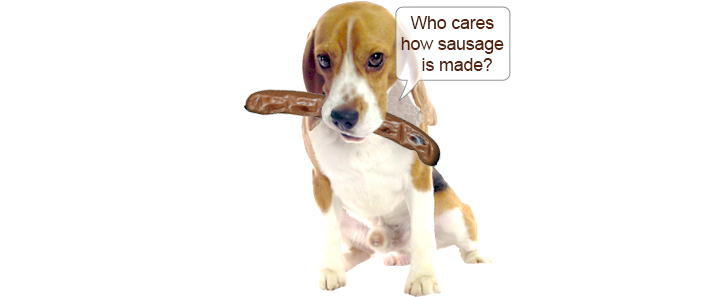My business partners meet twice a year to spend a few days together. A transcription of their discussions during these meetings could easily become a bestselling book.
A number of my partners have grown far beyond anything I ever taught them, which makes answering their questions a lot easier for me.
I employ a mildly deceptive technique that has been used by teachers throughout history:
When confronted with a question for which you have no immediate answer, stall for time by tossing the question back to the students. Keep their discussion moving forward until they have arrived at a solid conclusion. They will never suspect that you didn’t already know the answer.
During our last meeting, one of my partners was sharing the secrets of his very successful online campaigns with the rest of us when he said, “When I became a partner 15 years ago, I was hoping that Roy would tell us exactly how the sausage is made. Looking back, I appreciate his wisdom in not doing that.”
“What do you mean by, ‘how the sausage is made?’” I asked.
“I mean, ‘exactly how to write great ads.’”
His answer confused me because I was under the illusion that I had, in fact, taught them “exactly how to write great ads.” But rather than admit that I had no idea what he was talking about, I said, “Let’s talk about the different ways of making the sausage. Sexton, how many ways are there to write great ads?”
I asked that question as though I already knew the answer, when in truth, I did not. But I was smart enough to ask the person that I suspected would know the answer.
“Two,” answered Sexton. “You can follow a template and search for the information to fill each of the openings within that template, or you can gather information and then organize it however you choose. No template.”
His answer blew my mind because he was obviously right, but this idea of “writing to a template” had never once crossed my mind. Startled by his answer, I said to the room, “How many of you write to a template?”
About half the hands went up.
“How many of you gather information and then organize it? No template.”
The other half of the hands went up.
The thing that startled me the most, however, was that half of the most accomplished writers in the room were using one method, and the other half was using the other.
Even more interestingly, I spent the next several weeks asking a number of highly accomplished business owners which of the two methods they would follow. Again, half of them said “template,” which is another way of saying, “Plan your work, and work your plan.” The other half said, “Gather, then organize,” which is another way of saying, “Work with what you’ve got. Improvise.”
Regardless of which technique you prefer, does it surprise you that both techniques seem to work equally well?
Who’d have thought it?
If you have thoughts, anecdotes, or stories about this interesting duality of Planning vs. Improvisation, send them to indy@wizardofads.com and we’ll see if some of them land in the rabbit hole. Also, Indy is planning to feature some murals on the sides of buildings in the rabbit hole next week, so if you have a cool photo of an outdoor mural, send it to him with a description of its location, okay?
For those of you who don’t know, the rabbit hole is entered by clicking the image of Indy Beagle at the top of each week’s online version of the Monday Morning Memo. (That’s him at the top of this page holding a sausage in his jaws.) Indy’s rabbit hole is an informative, eclectic, wonderful waste of time.
“Not long ago, sitting at my desk at home, I suddenly had the horrifying realization that I no longer waste time.”
– MIT professor and physicist Alan Lightman in his book, A Sense of the Mysterious
Indy has the cure for Alan Lightman’s distress. His rabbit hole usually rambles on for about 8 to 28 pages. Click the image at the top of each rabbit hole page and it will take you to the next page. Anything can happen in the rabbit hole.
And it often does.
He’s waiting there for you now. (click)
Roy H. Williams
 Strider Education Foundation began when Ryan McFarland decided to teach every child in America how to ride a bike before they reach first grade. His All Kids Bike® movement has already donated free bikes and training programs to more than 136 schools in 26 states and the movement is just getting started! During this holiday season, Wizard Academy is proud to spotlight one of its own alumni as an example of generous giving. Why is Ryan doing this and how did he get started and could you possibly do something like this, too? The feel-good story of the season is about to begin at MondayMorningRadio.com
Strider Education Foundation began when Ryan McFarland decided to teach every child in America how to ride a bike before they reach first grade. His All Kids Bike® movement has already donated free bikes and training programs to more than 136 schools in 26 states and the movement is just getting started! During this holiday season, Wizard Academy is proud to spotlight one of its own alumni as an example of generous giving. Why is Ryan doing this and how did he get started and could you possibly do something like this, too? The feel-good story of the season is about to begin at MondayMorningRadio.com
